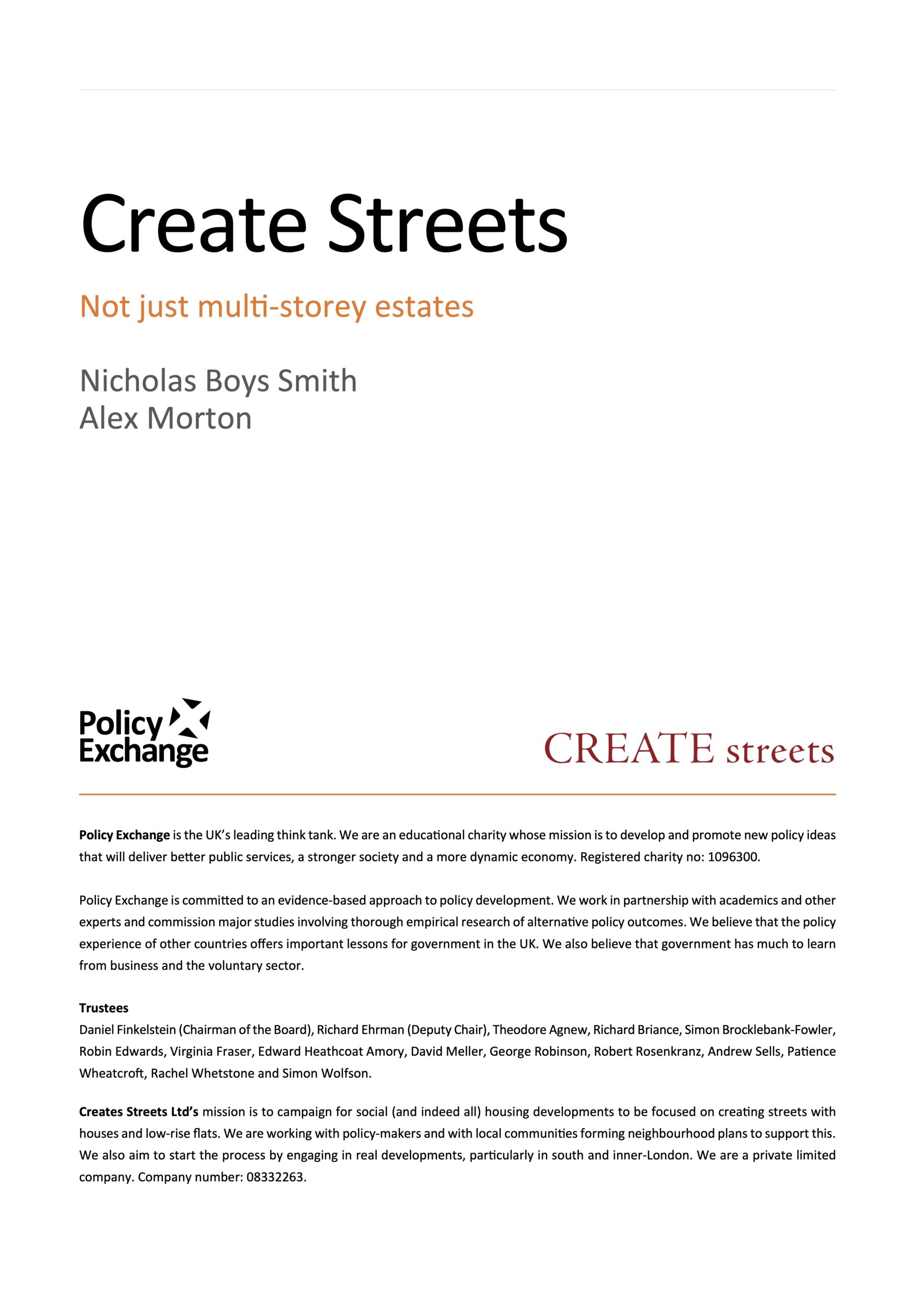
Create Streets
This report has been written in conjunction with Create Streets.
![]()
Demolishing high rise social housing blocks and replacing them with real streets made up of low rise flats and terraced housing would improve the lives of thousands of people who suffer from living in multi-storey housing.
Create Streets says that there are 140,000 households – 100,000 of which are social tenants – in England with children who live on the second floor or above.
It says that in London alone, the Mayor could build an additional 260,000 new and better quality homes over the next seven years by knocking down the unpopular, ugly, high rise tower blocks and estates of the 1950s, 60s and 70s that scar the capital’s skyline and encourage crime and social alienation. Multiple studies show that terraced streets can exceed the housing densities (between 75 and 200 units/hectare) of most existing high-rise housing developments.
The existing planning system has led to major cities building super high density and high rise, box sized flats, the smallest in Europe and smaller than ever before in the UK. Between 2003 and 2007, there was a seven fold increase in high rise building even though social housing tower blocks are extremely expensive to build and maintain. There is wealth of evidence that multi-storey living leads to higher crime rates, weaker communities, and poorer health and education outcomes for residents. Recent changes to the planning system give a chance to change this that local government and neighbourhoods should seize to take control of redevelopment in their area.
These multi-storey estates are harmful and occasionally lethal. Only last week an inquest opened into the 2009 Camberwell Tower block fire in London which killed six people. With only one stairwell escape was made difficult while falling debris from the initial fire set off multiple additional fires. The tower (Lakanal House) was due to be demolished but Southwark Council decided to refurbish it instead.
Studies have shown that residents of high-rise blocks or large estates suffer from more stress, mental health difficulties, neurosis and marriage breakdowns. Children living in high rise accommodation suffer from increased hyperactivity, hostility and juvenile delinquency even when you adjust for social economic status. Despite the fact social tenants make up only 21% of families with children, they make up 79% of those families living on the fifth floor of a building or above. In London, nearly one third (31%) of all families with children living in social housing reside on the second floor or above. Nearly all those who can choose housing in the private sector reject multi-storey living and choose houses or low rise flats.
Just as important as the social injustice for tenants is the wider economic and social crisis created by the failure to build enough homes. London has started development on just 16,000 homes a year – well below even the minimum number of 32,000 homes a year the Mayor’s London Plan states is needed just to keep up with household growth.
Findings include:
- 52,000 households with children who are social renters live on the third floor or above (40,000 of which are in London)
- 20,000 households with children who are social renters live on the fifth floor or above (16,000 of which are in London)
- At least eighty nine per cent of Britons want to live in a house on a street. Zero per cent (i.e. not one person) in one poll said they wanted to live in a tower block flat.
- Multi-storey housing costs more to build per square metre than other high density options. A ten-storey building is 10 per cent more expensive to build per square metre than a five-storey building. A fifty-storey building is 60 per cent more expensive. The disastrous multi-storey estates of the past were economically unviable but only possible due to government subsidies.
Recommendations include:
- The Mayor’s office should commission a full study of how many homes might be delivered by redeveloping multi-storey estates into streets and houses, including case studies in specific areas and how many areas could be redeveloped.
- The London Plan should remove super high density targets
- The London Plan should require that all large scale estate redevelopments are approved by local residents through neighbourhood plans and referendums.
- London should aim to ensure that the proportion of social tenants with children living on the upper floors of multi storey blocks falls in line with the share of private tenants.
- The Mayor should remove current building regulations that make it difficult to build conventional terraced houses and attractive streetscapes.

